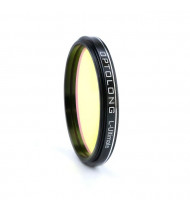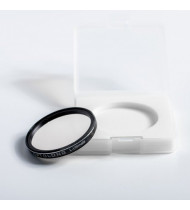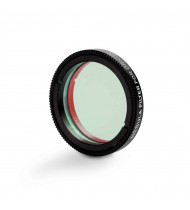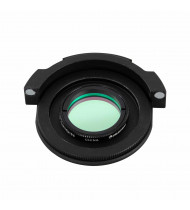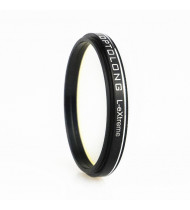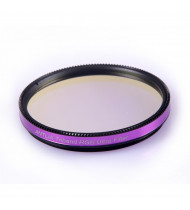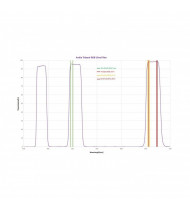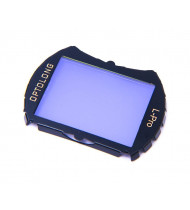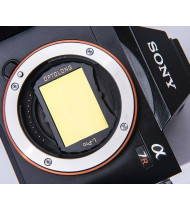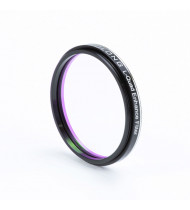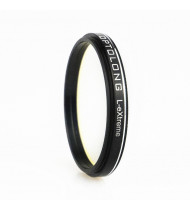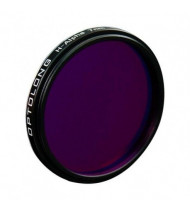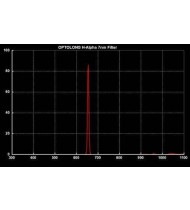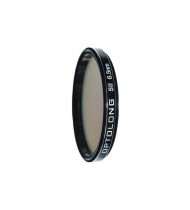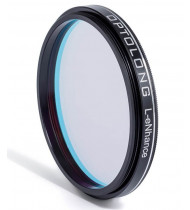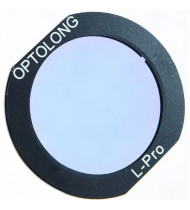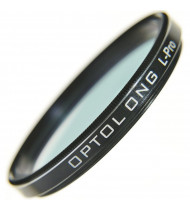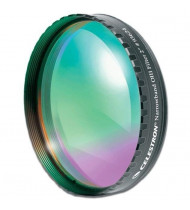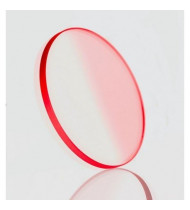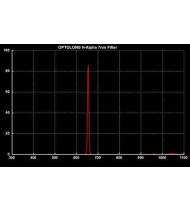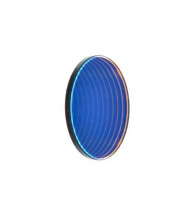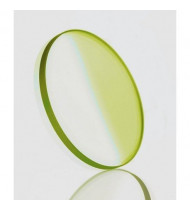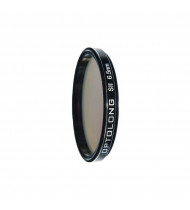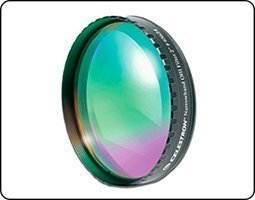
Optolong L-Ultimate 2" Filter
US$ 339.92The L-Ultimate filter is a practical solution for all amateurs who want to use their telescope from urban and sub-urban areas- Improve your view of nebulae with your Celestron Origin, especially from urban and suburban skies. This filter blocks light pollution, increases image contrast and darkens the sky background for sharper, more contrasted images.
- This filter transmits only the key Hα-Hβ-OIII wavelengths from emission nebulae, making their colors stand out from the dark background. It also blocks light pollution, allowing it to be used even from urban and suburban skies.
- Made for the Origin 6" RASA lens. Unlike similar filters with narrower bandwidths, this filter was specifically designed to work with the Origin's fast f/2.2 lens.
- Made of Schott glass with anti-reflective coatings, the surfaces of this filter are completely flat and free of defects.
Optolong L-eXtreme Filter 2" (50.8mm)
US$ 261.27The advantage of the L-eXtreme filter is that there is no transmission between the H-beta and OIII lines, as there is no nebula emission lines there. In this case, it isn't letting light pollution come through so that maximize nebulas signal and make the sky background darker while imaging. The L-eXtreme filter should better isolate the emission lines only and better protect from light pollution.
Antlia RGB Triband 2" Filter
US$ 226.32Anti-pollution filter effectively isolates the emission lines not only of emission nebulae but also of galaxies, clusters or globular clusters and reaches a maximum transmission of up to 97%.- The L-Pro CCD filter improves the contrast of deep-sky objects and reduces the sky background.
Optolong L-QEF L-Quad Enhance Filter 2"
US$ 208.84L-QEF eliminates light pollution caused by mercury and sodium lamps and produces a broadband image with minimal color cast. This filter is broadband and suppresses wavelengths of light pollution. It is great for star clusters, dark and reflection nebulae, as well as galaxies in skies affected by light pollution.Optolong L-eXtreme Filter 1.25" (31.8mm)
US$ 200.11The advantage of the L-eXtreme filter is that there is no transmission between the H-beta and OIII lines, as there is no nebula emission lines there. In this case, it isn't letting light pollution come through so that maximize nebulas signal and make the sky background darker while imaging. The L-eXtreme filter should better isolate the emission lines only and better protect from light pollution.
Optolong H-Alpha 7nm 2" (50.8mm) v.2
US$ 200.11The H-ALPHA 7nm filter is the most popular narrow-band filter that allows a 7nm bandwidth centered on a 656nm wavelength.
Optolong OIII Filter 6,5nm 2" (50.8mm)
US$ 196.61Extra Narrowband OIII-CCD 6.5nm filter is designed for nebula observation allowing 6.5nm bandwidth of light centered on a wavelength of 500nm through, which corresponds to OIII emission lines, and reducing the transmission of certain wavelengths of light, specifically those produced by artificial light including mercury vapor, and both high and low pressure sodium vapor lights and the unwanted natural light caused by neutral oxygen emission in our atmosphere (i.e. skyglow).
Optolong SII Filter 6.5nm 2" (50.8mm)
US$ 196.61Extra narrowband SII-CCD 6.5nm filter (Sulful II for CCD) is designed for nebula observation allowing 6.5nm bandwidth of light centered on a wavelength of 672nm through, and reducing the transmission of certain wavelengths of light, specifically those produced by artificial light including mercury vapor, and both high and low pressure sodium vapor lights and the unwanted natural light caused by neutral oxygen emission in our atmosphere (i.e. skyglow).
Optolong L-eNhance Light Pollution Filter 2"
US$ 173.89L-eNhance 2" Optolong filter (M28x0.75) 50.8mm - Recommended for: shooting in double pass band (H-Alpha, OIII and H-Beta) with CMOS or CCD color cameras or DSLR
- The L-Pro CCD filter improves the contrast of deep-sky objects and reduces the sky background.
Optolong L-Pro Filter 2"
US$ 166.02The L-Pro CCD filter improves the contrast of deep-sky objects and reduces the sky background.
- blocks UV and IR (700 - 1100 nm)
- high transmission at passband
- improved color balance for DSLRs and One-Shot Color Astro Cameras, e.g. ASI Color Cameras cooled or uncooled by ZWO.
- high optical quality
- in 2" filter cell
- The L-Pro Nebula filter permits roughly 3x longer exposure times than without a filter and therefore improves contrast significantly.
Celestron Oxygen III Filter 50.8mm (2")
US$ 165.15- The 2" OIII narrowband filter isolates the two doubly-ionized oxygen lines (496 and 501 nm lines)
- Filter has ultra-hard, vacuum-deposited coating
- Eliminates un-natural colored halos surrounding bright stars
Optolong H-Alpha 7nm 36mm
US$ 152.92The H-ALPHA 7nm filter is the most popular narrow-band filter that allows a 7nm bandwidth centered on a 656nm wavelength.
Optolong SII Filter 6.5nm 36mm
US$ 152.92Extra narrowband SII-CCD 6.5nm filter (Sulful II for CCD) is designed for nebula observation allowing 6.5nm bandwidth of light centered on a wavelength of 672nm through, and reducing the transmission of certain wavelengths of light, specifically those produced by artificial light including mercury vapor, and both high and low pressure sodium vapor lights and the unwanted natural light caused by neutral oxygen emission in our atmosphere (i.e. skyglow).
Optolong OIII Filter 6,5nm 36mm
US$ 152.92Extra Narrowband OIII-CCD 6.5nm filter is designed for nebula observation allowing 6.5nm bandwidth of light centered on a wavelength of 500nm through, which corresponds to OIII emission lines, and reducing the transmission of certain wavelengths of light, specifically those produced by artificial light including mercury vapor, and both high and low pressure sodium vapor lights and the unwanted natural light caused by neutral oxygen emission in our atmosphere (i.e. skyglow).
Optolong SII Filter 6.5nm 1.25" (31.8mm)
US$ 147.67Extra narrowband SII-CCD 6.5nm filter (Sulful II for CCD) is designed for nebula observation allowing 6.5nm bandwidth of light centered on a wavelength of 672nm through, and reducing the transmission of certain wavelengths of light, specifically those produced by artificial light including mercury vapor, and both high and low pressure sodium vapor lights and the unwanted natural light caused by neutral oxygen emission in our atmosphere (i.e. skyglow).


